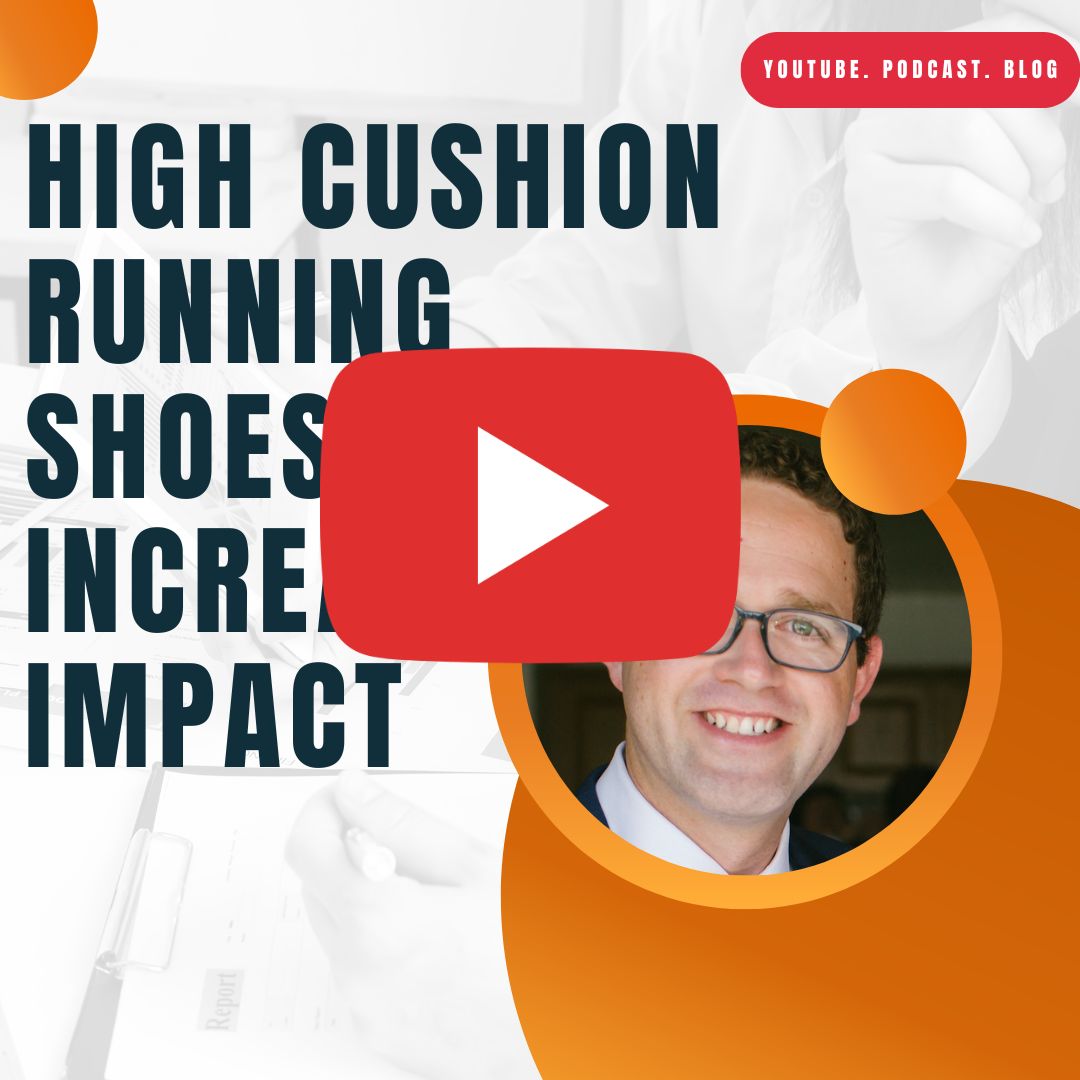High Cushion Running Shoes Increase Impact
Feb 12, 2023
I can’t count how many patients have told me how much they love running in Hokas and high cushion shoes. In fact for a long time I recommended patients to run in some of the most cushion laden shoes they could find. Little did I know that I was actually causing more damage to my patient’s musculoskeletal system and running form.
Running shoes with high cushion increase impact
Let's start with the technical details, according to the Orthopedic Journal of Sports Medicine runners demonstrated increased impact forces and loading rate when running in a maximal support (high cushion) shoe versus a neutral shoe. This is contrary to the advice historically dispensed by PTs. The previous school of thought was the more cushion a shoe provided the less impact and stress the lower extremities experienced from running. Unfortunately, what the new research shows is that while high cushion and maximally supportive shoes may provide a sensation of less impact through the lower extremities they don’t lessen the overall impact translated from the ground to the patient.
Runners with max cushion shoes run harder
The reason why runners perceive less impact while running in max cushion shoes is due to a reduction in the sensation felt by runners when they impact the ground. The emerging research shows that an increased shoe cushion provides the runner with less biofeedback from the force being put through their feet while they run. Therefore, runners show trends of longer strides with gait deviations of overstriding and heel strike in max cushion shoes. Despite the increased cushion in their shoe the runner is actually putting more stress upon their bodies because they are simply running harder. Now you may be thinking to yourself “if runners with high cushion shoes run harder on the ground and put more stress on their bodies while running then I will prescribe my runners minimal shoes with minimal cushion support”.
Watch on YouTube:
Don’t overcompensate by prescribing minimal running shoes
While it’s tempting to start advising runners to run in minimal shoes, it is important to remember that minimal running shoes still have high levels of ground reaction forces (impact and stress on the body). Therefore, prescribing your runner a shoe with minimal cushion may give them similar results to the high cushion shoe and may not be beneficial for them. Research is suggesting for clinicians to refrain from recommending extremely high or low cushion shoes for patients. Most runners are benefiting from moderate cushion shoes with neutral support. To help find the correct shoe for your runner here are three examples of moderate cushion and neutral shoes.
- New Balance 880
- Neutral
- Moderate heel drop
- Moderate arch support
- Wide foot options
- Saucony Ride
- Neutral
- Moderate heel drop
- Moderate arch support
- Light weight
- Mizuno Wave Rider
- Neutral
- High heel drop
- Moderate arch support
- Wide toe box with narrow heel
Put yourself in your runner’s shoes
Running shoes can be a complex topic, one of the best ways to learn about running shoes is to feel for yourself how they fit. Go to your local running shoe store and try on popular running shoes to gain a better understanding of the fit and feel of the wide array of shoes runners have to choose from. Make sure to note the differences between low and high arch support, cushion (absorption), and heel drop shoes. Additionally, if you are interested in learning more about prescribing your runners the correct shoe check out the free clinical resource Running Shoe Reference Guide. If you are interested in learning more about running gait analysis, improving your patients outcomes and/or learning how to start your own profitable running gait analysis clinic click here to check out our continuing education course “The Essentials of Running Gait Analysis”. Lastly, if you have questions about this content or the course feel free to reach out to us to discuss and we will personally respond to your question.
Listen to the podcast!
Click the image to learn more about "The Essentials of Running Gait Analysis" course:
Follow us on Instagram for all things running medicine.


